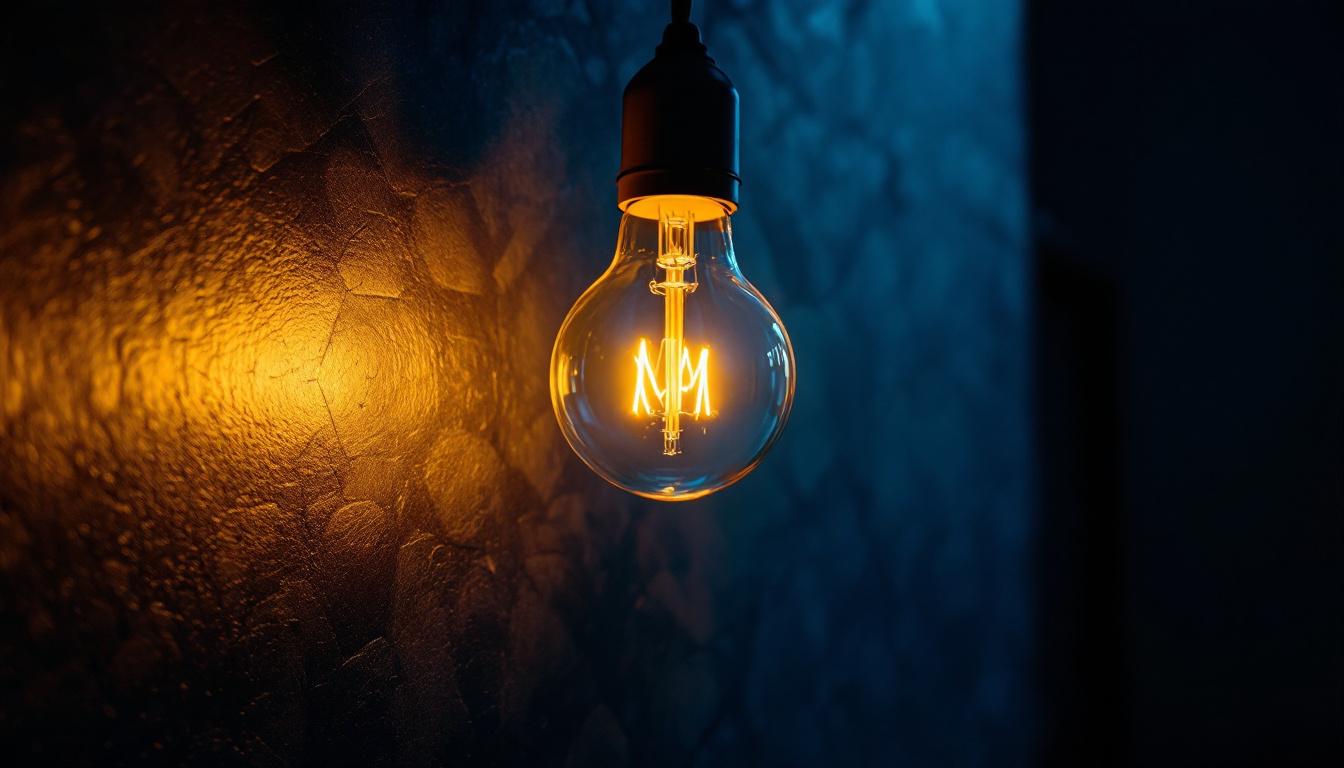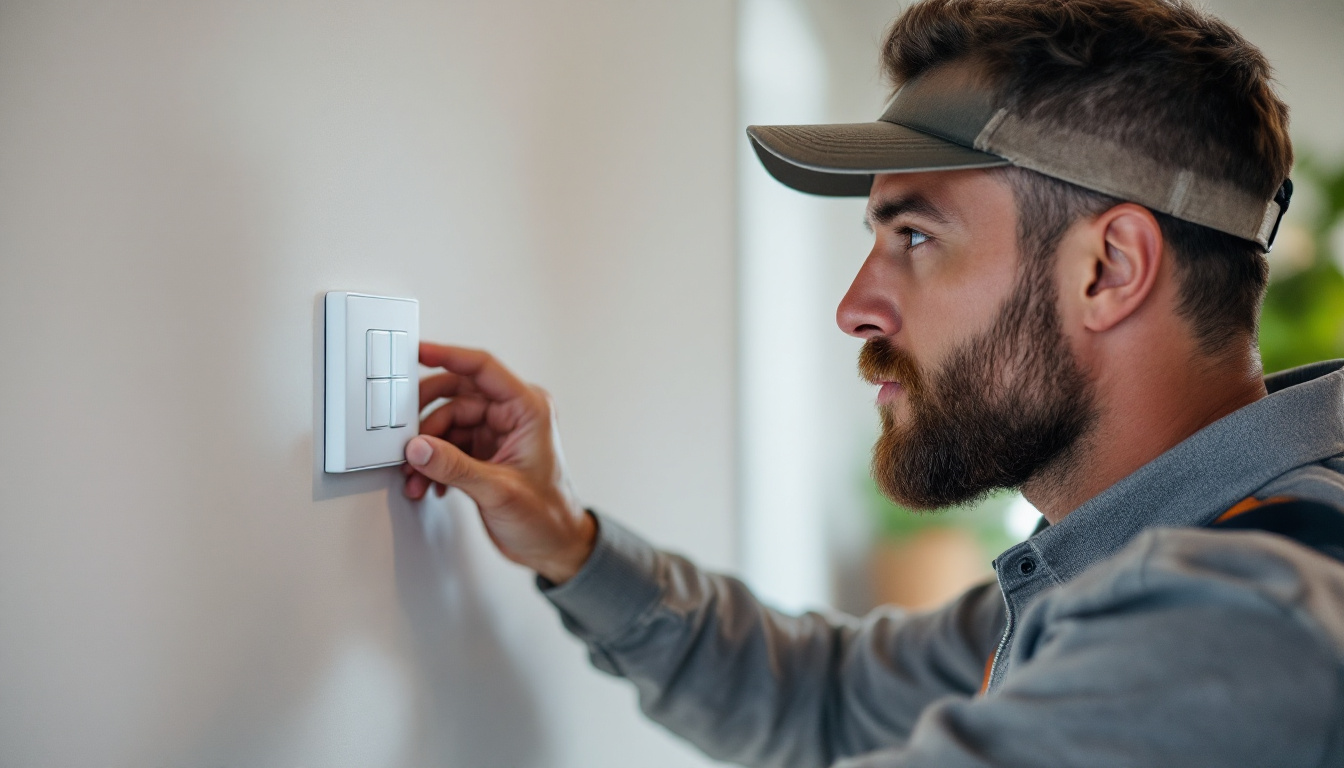
In the realm of lighting installations, understanding the different types of light bulbs is crucial for ensuring optimal performance, energy efficiency, and aesthetic appeal. Among these, the Type B light bulb stands out for its unique characteristics and applications. This article delves into what a Type B light bulb is, its importance in various lighting setups, and considerations for lighting contractors when incorporating it into their projects.
Type B light bulbs are primarily recognized for their specific design and functionality. They are typically used in applications where a more focused light output is necessary, making them ideal for various settings, including residential, commercial, and industrial environments.
The Type B bulb is characterized by its tubular shape, often resembling a “candelabra” style. This design allows for a more concentrated beam of light, which can be advantageous in situations where directed lighting is needed. The bulbs are usually available in different wattages and color temperatures, providing flexibility for various lighting requirements.
In terms of specifications, Type B bulbs often feature a bi-pin base, which allows for easy installation in compatible fixtures. The bi-pin design not only simplifies the installation process but also ensures a secure connection, reducing the risk of flickering or failure. Furthermore, many Type B bulbs are now available in energy-efficient LED options, which not only consume less power but also have a longer lifespan compared to traditional incandescent types. This shift towards LED technology has made Type B bulbs an even more attractive choice for environmentally conscious consumers.
Type B light bulbs are commonly used in a variety of applications. They are particularly popular in decorative lighting, such as chandeliers and wall sconces, where the aesthetic appeal is just as important as the functionality. Their ability to provide focused lighting makes them suitable for task lighting in kitchens, workspaces, and retail environments.
Additionally, Type B bulbs are often employed in recessed lighting fixtures, where they can effectively illuminate specific areas without producing excessive glare. This versatility makes them a preferred choice for lighting contractors looking to meet diverse client needs. Beyond these common uses, Type B bulbs are also frequently found in display cases and accent lighting setups, where they help to highlight products and create an inviting atmosphere. Their compact size and efficient design allow for creative lighting solutions that enhance the overall ambiance of a space, making them a staple in both modern and traditional design schemes.
The significance of Type B light bulbs in lighting installations cannot be overstated. Their unique features and advantages make them an essential component in achieving desired lighting outcomes.
One of the primary reasons Type B light bulbs are critical is their energy efficiency. Many Type B bulbs are designed to be compatible with LED technology, which consumes significantly less energy compared to traditional incandescent bulbs. This shift not only reduces electricity costs for consumers but also contributes to a more sustainable approach to lighting.
For lighting contractors, recommending Type B LED bulbs can enhance their reputation as environmentally conscious professionals. Clients are increasingly looking for energy-efficient solutions, and incorporating Type B bulbs into installations can help meet these expectations. Additionally, many regions offer incentives or rebates for using energy-efficient lighting, further encouraging the adoption of Type B bulbs. This financial benefit can be a compelling selling point for contractors, as it not only aligns with eco-friendly practices but also provides tangible savings for clients.
Type B light bulbs are known for providing high-quality illumination. Their ability to produce bright, focused light makes them ideal for applications where visibility is paramount. This is particularly important in settings such as retail spaces, where effective lighting can influence customer behavior and enhance the shopping experience.
Moreover, the color rendering index (CRI) of Type B bulbs tends to be high, meaning they render colors more accurately compared to lower-quality bulbs. This feature is essential in environments like art galleries or showrooms, where color accuracy is crucial for showcasing products. The enhanced lighting quality not only improves the aesthetic appeal of spaces but also plays a vital role in safety. In workplaces, for instance, proper lighting can reduce eye strain and fatigue, leading to increased productivity and employee satisfaction.
The versatility of Type B light bulbs allows them to be used in a wide range of fixtures and settings. From residential homes to commercial spaces, their adaptability makes them a go-to choice for lighting contractors. Whether it’s for accent lighting, ambient lighting, or task lighting, Type B bulbs can meet various needs without compromising on style or effectiveness.
Furthermore, the availability of different wattages and color temperatures allows contractors to customize lighting solutions based on client preferences and specific project requirements. This flexibility can significantly enhance the overall satisfaction of clients and lead to repeat business. Additionally, the ease of installation associated with Type B bulbs means that contractors can save time on projects, allowing for quicker turnarounds and more efficient workflow. As technology continues to advance, the emergence of smart Type B bulbs that can be controlled via mobile apps or voice commands adds another layer of convenience and innovation, making them even more appealing to modern consumers who prioritize smart home solutions.
When incorporating Type B light bulbs into lighting installations, there are several important considerations for lighting contractors to keep in mind. These factors can impact the overall success of a project and client satisfaction.
Before selecting Type B bulbs for a project, it is essential to ensure that the fixtures are compatible. The bi-pin base of Type B bulbs requires specific socket types, and using them in incompatible fixtures can lead to performance issues or even damage. Contractors should always verify fixture specifications and ensure that the chosen bulbs will fit securely.
Additionally, understanding the wattage limitations of fixtures is crucial. Exceeding the recommended wattage can result in overheating and potential hazards. Therefore, it is advisable to consult the fixture’s documentation or manufacturer guidelines to avoid any complications.
Choosing the right color temperature for Type B light bulbs is another critical consideration. Color temperature is measured in Kelvin (K) and can significantly affect the ambiance of a space. For instance, warmer color temperatures (around 2700K) create a cozy atmosphere, making them suitable for residential settings. In contrast, cooler temperatures (5000K and above) are often preferred in commercial environments for their bright and energizing effect.
Contractors should engage clients in discussions about their lighting preferences and the intended use of the space to make informed recommendations regarding color temperature. This collaborative approach can lead to more successful outcomes and satisfied clients.
Proper installation of Type B light bulbs is essential for optimal performance and longevity. Lighting contractors should follow best practices to ensure that bulbs are installed securely and correctly. This includes turning off power to the fixture before installation, handling bulbs with care to avoid damage, and ensuring that the bulbs are seated properly in their sockets.
Additionally, educating clients on the maintenance of Type B bulbs can enhance their lifespan. Simple tips, such as regularly dusting fixtures and avoiding touching the glass with bare hands, can prevent premature failure and ensure consistent lighting quality.
The lighting industry is continuously evolving, and Type B light bulbs are no exception. As technology advances, new trends are emerging that may influence the future of Type B lighting installations.
One of the most significant trends is the integration of smart technology into lighting solutions. Smart Type B bulbs are becoming increasingly popular, allowing users to control their lighting through mobile apps or voice commands. This innovation enhances convenience and offers greater flexibility in managing lighting environments.
For lighting contractors, staying informed about smart lighting options can provide a competitive edge. Offering clients the ability to incorporate smart features into their lighting installations can lead to increased satisfaction and referrals.
As sustainability becomes a priority for consumers and businesses alike, the demand for energy-efficient lighting solutions will continue to grow. Type B bulbs, particularly those designed with LED technology, are well-positioned to meet this demand.
Contractors should remain knowledgeable about the latest energy-efficient products and technologies to provide clients with the most effective solutions. This commitment to sustainability not only benefits the environment but also aligns with the values of many modern consumers.
Type B light bulbs play a critical role in lighting installations, offering a unique combination of design, functionality, and versatility. Their energy efficiency, enhanced lighting quality, and adaptability make them an essential choice for lighting contractors aiming to deliver high-quality solutions to their clients.
By understanding the specifications, applications, and considerations associated with Type B bulbs, contractors can make informed decisions that enhance their projects and satisfy client needs. As the lighting industry continues to evolve, staying abreast of trends and innovations will ensure that contractors remain competitive and capable of delivering exceptional lighting experiences.
Incorporating Type B light bulbs into lighting installations is not just a technical decision; it is a commitment to quality, efficiency, and client satisfaction. Embracing this commitment will undoubtedly lead to successful projects and lasting relationships in the ever-evolving world of lighting.
Ready to elevate your lighting installations with the efficiency and elegance of Type B light bulbs? At LumenWholesale, we provide lighting contractors with the highest quality, spec-grade lighting products at prices that can’t be beaten. Say goodbye to local distributor markups and hello to a vast selection of reliable lighting solutions that meet the most stringent industry standards. Plus, with free shipping on bulk orders, you can stock up on premium lighting without worrying about hidden fees. Don’t compromise on quality or value—choose LumenWholesale for Wholesale Lighting at the Best Value and light up your projects with confidence.

Discover the ultimate guide to transforming your basement with the perfect lighting solutions.

Unlock the potential of modern lighting with our in-depth exploration of 4-way smart switches.

Discover the advantages of using specialized power plugs for washing machines tailored for lighting contractors.

Discover innovative strategies from expert lighting contractors on integrating landscape solar lighting into outdoor spaces.